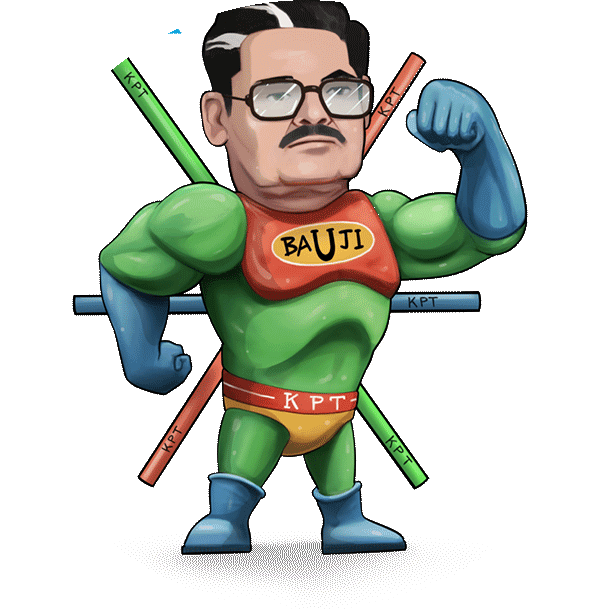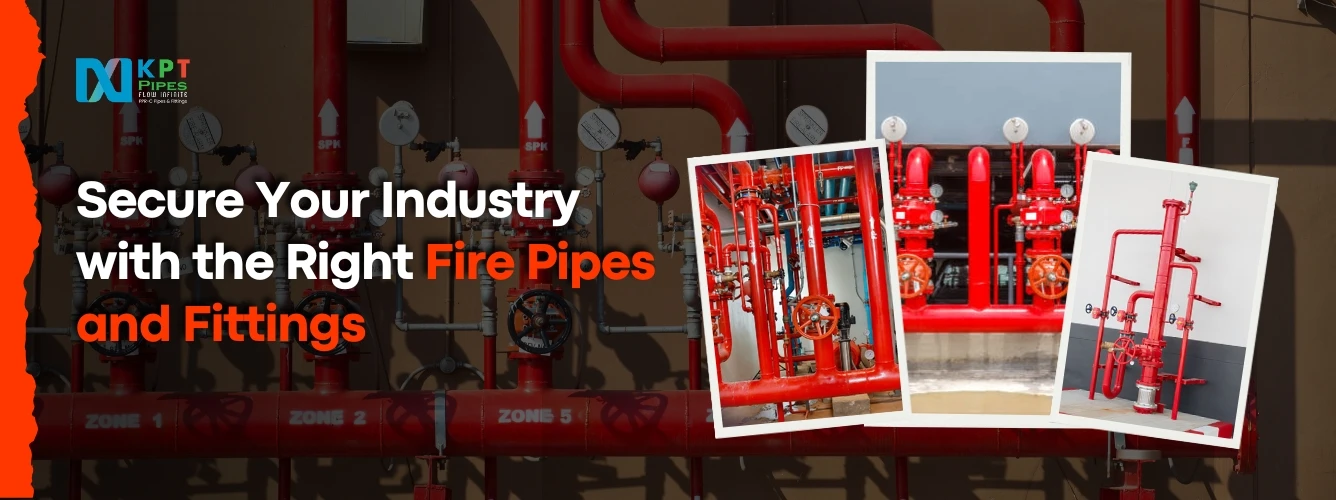Industrial facilities face a unique set of fire safety challenges. From flammable liquids and high-temperature equipment to densely packed machinery, a single spark can trigger a catastrophic blaze. In seconds, valuable inventory goes up in smoke, production grinds to a halt, and employee safety hangs in the balance. Even minor fires can cause millions of dollars in damage through equipment loss, toxic smoke, and lengthy downtime. Comprehensive fire prevention includes alarms, sprinklers, and suppression systems. However, the backbone of that network is the fire fighting pipes and fittings.
Choosing and installing the right fire fighting pipes and fittings is critical to delivering water or foam precisely where and when it’s needed. Poor-quality piping can burst under pressure surges or warp under heat exposure, leaving gaps in protection. By contrast, a robust fire piping network ensures uninterrupted flow, rapid response, and system reliability.
The right fire fighting pipes and fittings safeguard your facility, protect lives, and preserve assets. So, you cannot just choose any pipes to include into your fire fighting systems. You need just the perfect piping to secure your industrial space. Here we talk about the most critical features that fire suppression pipes must have. Let’s review them.
Table of Contents
Toggle1. Fast Water Delivery Under High Pressure
When a fire breaks out, every second of delayed water delivery generates more damage. The best fire fighting pipes and fittings are designed to deliver high-pressure service. They ensure that water travels at sufficient velocity to reach every sprinkler head and hose station efficiently and quickly. Moreover, industrial pumps often generate surge pressures well above 20 bar. Inferior piping materials may expand or rupture under these conditions, disrupting the flow. By contrast, high-strength composite or steel-reinforced fire fighting pipes and fittings will maintain their shape and diameter even under sudden pressure spikes.
This reliability prevents weak-link failures, keeping the network fully pressurized. Rapid, high-pressure water delivery from these pipes will not only put out flames faster, but also reduce the smoke generation and toxic gas buildup. In critical operations, that split-second advantage can save both lives and costly equipment.
2. Heat Resistance for Uncompromised Performance
Industrial fires can produce external temperatures exceeding 300 °C. These are hot enough to soften or deform standard piping. Fire fighting pipes and fittings engineered with heat-resistant materials such as CPVC blends or composite resins can however retain structural integrity under extreme heat exposure. These pipes avoid warping and joint failure that would otherwise interrupt water delivery. Some advanced fire fighting pipelines even self-extinguish surface flames, preventing the network itself from fueling the fire. Consistent performance from these pipes at high temperatures ensures water or foam continues to flow through the system until the emergency subsides. Pipes with proper heat resistance also reduce the risk of sudden pipe collapse, which could otherwise create dangerous steam explosions in confined spaces.
3. Corrosion Resistance for Long-Term Reliability
Industrial environments often expose pipes to corrosive chemicals, moisture, and varying pH levels. Corrosion can thin pipe walls, create pinhole leaks, and weaken joints. These elements can compromise the entire fire suppression system. However, fire fighting pipes and fittings made from corrosion-resistant materials like stainless steel, galvanized steel, or specialized polymers resist rust and chemical attack over decades. Their protective coatings and inert inner linings prevent scale buildup and maintain full internal diameter. This resistance protects against hidden leaks and ensures consistent water pressure. Moreover, regular maintenance becomes simpler, as there’s less need to replace corroded sections. A corrosion-proof piping network is a reliable asset that stands guard over the long term. It reduces lifecycle costs and eliminates unexpected points of failure in your fire protection strategy.
4. Leak-Proof Fusion Joints for Seamless Network Integrity
Joints are the most vulnerable points for leaks in any piping network. Standard mechanical fittings rely on gaskets or threaded connections that may loosen over time under vibration or pressure cycling. The best fire fighting pipes and fittings employ heat-fusion or solvent-bonded joints that fuse pipe ends and fittings into one homogenous structure. These fusion joints match the pipe’s base material strength, leaving no weak interfaces. The result is a seamless network that resists leaks even under high pressure and temperature fluctuations. A fusion-welded system behaves as a single, continuous pipe with proper installation by trained technicians. It guarantees that the water delivery path remains watertight when the alarm sounds.
5. Chemical Compatibility for Specialized Industrial Applications
Industrial spaces often handle a variety of chemicals, solvents, fuels, acids, and alkalis that can damage ordinary piping. When suppression water mixes with these chemicals, it can accelerate corrosion or create harmful by-products. Fire fighting pipes and fittings manufactured from chemically resistant polymers or lined with inert coatings however maintain integrity in such environments. These engineered materials withstand aggressive fluids and prevent pipe degradation. Chemical compatibility is especially important in specialized facilities such as petrochemical plants or battery storage sites. Such compatibility ensures the suppression network isn’t undermined by the very environment it protects. Choosing pipes with verified resistance to your facility’s specific chemicals secures your fire safety system against failures caused by unexpected reactions or material breakdown.
6. Hydraulic Efficiency for Optimal Coverage
Effective fire suppression requires consistent hydraulic performance. Pipes need to maintain design flow rates and pressure across every outlet. Poorly sized or rough-walled pipes will create excessive friction loss, decreasing water reach and spray intensity. High-quality fire fighting pipes and fittings feature smooth internal surfaces and precise wall tolerances to reduce turbulence. This hydraulic efficiency enables both sprinklers and hose reels to deliver rated flows. Hydraulic efficiency is more important in tall or sprawling industrial complexes. Efficient hydraulics will prevent pressure drop off at remote heads, ensuring coverage is uniform from the control room to the farthest corner. Optimized water delivery also reduces wasted water and maximizes the effectiveness of every drop. This results in strengthening your facility’s overall fire protection capability.
7. Impact and Wear Resistance in Harsh Environments
Industrial floors see heavy traffic from forklifts, pallet jacks, and maintenance activities. Fire fighting pipes and fittings running along walls or overhead are at risk from accidental impacts, abrasion, and mechanical wear. However, pipes designed for impact resistance use reinforced composites or thicker wall sections that absorb shocks without cracking. Some designs even incorporate flexible coils that allow slight bending under force. Abrasion-resistant inner linings protect against high-velocity water carrying particulate matter. You can ensure your piping network withstands daily rigors without sustaining damage by selecting durable, wear-resistant fire fighting pipes. Moreover, such durable pipes translate into fewer repairs and uninterrupted protection for your industrial space.
8. Easy Inspection and Maintenance for System Readiness
A fire suppression system is only effective if it’s maintained in peak condition. Fire fighting pipes and fittings that include accessible inspection ports, corrosion-detect lines, or embedded sensors simplify routine checks. Modular pipe segments with quick-disconnect couplings allow swift replacement of suspect sections. Clear labeling of pressure zones and flow direction further aids technicians during annual tests. Some advanced systems even integrate IoT sensors that monitor pressure, temperature, and flow in real time. They also alert maintenance teams to potential issues before failure occurs. Choosing fire fighting pipes with such built-in maintenance features and help reduce inspection time, improve system reliability, and guarantee rapid response when a genuine emergency strikes.
Conclusion
Choosing the right fire fighting pipes and fittings is not just a technical decision. It is a decision that can save your life and property. In an emergency, only pipes built to handle sudden pressure surges, extreme heat, and corrosive agents will deliver water exactly where it’s needed. Inferior piping risks burst lines, stalled flow, and catastrophic failure when you can least afford it.
ThermaPlus fire fighting pipes and fittings from KPT Piping System meet and exceed these demands. Their advanced composite construction resists heat, impact, and harsh chemicals while maintaining leak-proof joints under high pressure. Each piece arrives factory-tested and ISO certified to ensure consistent performance. Select ThermaPlus to strengthen your fire protection network, minimize weak points, and guarantee rapid, reliable response during a crisis.
Trust KPT Piping System for unmatched durability, safety, and peace of mind. With our exceptional fire fighting pipes and fittings in place, your industrial space will gain the robust defense it needs against any blaze.



